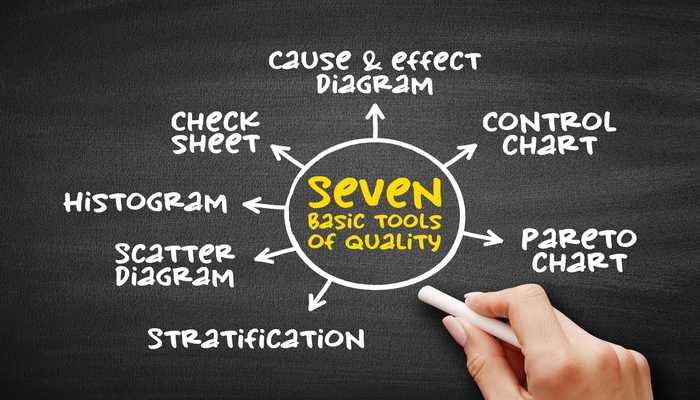Summary: Implementing a Quality Management System (QMS) is paramount to ensuring the consistent delivery of high-quality products and services. A robust QMS streamlines processes and enhances customer satisfaction while ensuring adherence to industry standards, such as ISO 9001. To embark on this journey, it is essential to understand the key components and best practices associated with QMS implementation.
Understanding Quality Management Systems
A Quality Management System (QMS) is a framework that sets out a systematic approach to managing quality within an organization. It encompasses policies, processes, procedures, and resources needed to achieve and maintain quality standards. A well-implemented QMS helps organizations enhance efficiency, reduce errors, and improve customer satisfaction.
Why QMS Implementation is Important?
Implementing a QMS offers numerous benefits to your business. Here are some compelling reasons why you should consider implementing a QMS:
- Improved Efficiency: A QMS helps streamline processes, eliminate redundancies, and reduce waste, leading to increased efficiency and productivity.
- Enhanced Customer Satisfaction: By implementing a QMS, you can consistently meet customer requirements, deliver high-quality products and services, and improve overall customer satisfaction.
- Compliance with Standards: A QMS ensures compliance with industry standards, regulations, and legal requirements, minimizing the risk of penalties and legal issues.
- Reduced Costs: By identifying and addressing quality issues early on, a QMS helps reduce rework, scrap, and customer complaints, resulting in cost savings.
- Continuous Improvement: A QMS provides a framework for continual improvement, enabling you to identify areas for enhancement and implement corrective actions.
How can you ensure a seamless and effective QMS implementation?
An EQMS standardizes processes, enhances compliance, and drives continuous improvement.
The Key Steps in Implementing a QMS
Implementing a QMS involves a systematic approach to ensure its effectiveness. Let’s explore the key steps involved in implementing a QMS:
Step 1: Establishing the Need for a QMS
Before embarking on the implementation journey, it’s crucial to assess your organization’s current quality management practices and identify the need for a QMS. Conduct a gap analysis to determine areas of improvement and define the scope of your QMS.
Step 2: Planning the QMS Implementation
In this step, create an implementation plan that outlines the activities, timelines, responsibilities, and resources required for successful QMS implementation. Define clear objectives and establish a project team to oversee the implementation process.
Step 3: Defining Quality Objectives
Identify measurable quality objectives aligned with your organization’s strategic goals. These objectives should be: Specific, Measurable, Achievable, Relevant, and Time-bound (SMART). They serve as benchmarks to gauge the effectiveness of your QMS.
Step 4: Documenting Processes and Procedures
Documenting your processes and procedures is essential for consistent implementation and understanding. Develop a comprehensive quality manual, work instructions, and documentation templates that align with industry standards and regulations.
Step 5: Training and Awareness
Ensure that all employees are aware of the QMS and their roles in its implementation. Conduct training programs to educate employees about quality concepts, procedures, and their responsibilities. Foster a culture of quality throughout the organization.
Step 6: Implementation and Monitoring
Activate your QMS by implementing the specified processes and procedures. Monitor the implementation closely, collect data, and measure performance against established quality objectives. Identify areas for improvement and take corrective actions as necessary.
Step 7: Conducting Audits
Regularly conduct internal audits to assess the effectiveness of your QMS. Internal audits help identify non-conformities, process gaps, and areas requiring improvement. Use audit findings to implement corrective actions and ensure compliance with standards.
Step 8: Continual Improvement
Continual improvement is a fundamental principle of a QMS. Analyze data, customer feedback, and audit results to identify opportunities for improvement. Implement preventive measures, drive innovation, and strive for excellence in your quality management practices.
FAQ | QMS Implementation
What is a Quality Management System (QMS)?
Quality Management System (QMS) is a framework that organizations use to manage and improve the quality of their products and services. It involves processes, procedures, and resources designed to meet customer requirements and comply with regulations.
How can a QMS strengthen my business and competitive advantage?
Implementing a QMS can benefit your business in several ways. It improves efficiency, enhances customer satisfaction, ensures compliance with standards, reduces costs, and promotes continuous improvement.
When you compare QMS vs EQMS, an EQMS offers additional features like automation, real-time data analysis, and seamless integration with other business systems, enhancing the management of quality processes.
What are the key steps to successfully implementing a QMS?
Some key steps in implementing a QMS include establishing the need for a QMS, planning the implementation, defining quality objectives, documenting processes and procedures, conducting training and awareness programs, implementing and monitoring the QMS, conducting audits, and focusing on continual improvement.
How do I ensure full compliance with ISO 9001 and industry regulations?
To ensure compliance with standards, thoroughly understand the requirements of relevant standards and regulations. Develop processes and procedures that align with these requirements, conduct regular audits, and implement corrective actions to address non-conformities.
What are the most common pitfalls in QMS implementation, and how can I avoid them?
Common pitfalls include lack of leadership commitment, resistance to change, poor documentation control, and inadequate training. Avoid these by securing executive sponsorship, fostering a quality-driven culture, and integrating QMS into daily operations. Leverage automation to ensure process consistency and real-time monitoring for continuous improvement.
How can I measure and continuously improve the effectiveness of my QMS?
To measure the effectiveness of your QMS, establish clear quality objectives and track performance against these objectives. Monitor key metrics, collect data on customer satisfaction, conduct internal audits, and seek feedback from stakeholders.
How do digital tools and AI enhance QMS efficiency and performance?
Digital tools, such as our EQMS flowdit and AI optimize QMS by automating compliance tracking, predictive risk assessment, and real-time data analysis. AI-powered analytics enhance decision-making, while automated workflows reduce manual errors. Cloud-based solutions enable global standardization and seamless integration across multiple locations, ensuring scalability and operational efficiency.
How can I ensure seamless global QMS implementation across multiple locations?
To achieve a standardized yet adaptable QMS globally, establish a centralized framework based on ISO 9001 while allowing regional flexibility for local regulations. Implement cloud-based QMS software for real-time visibility, enforce uniform training programs, and conduct periodic cross-location audits. Standardized metrics ensure consistent quality across all sites.
How does a strong QMS drive financial performance and shareholder value?
A well-implemented QMS reduces operational inefficiencies, minimizes compliance risks, and enhances product quality, leading to cost savings and improved customer satisfaction. This, in turn, strengthens brand reputation, increases market competitiveness, and positively impacts financial performance, ultimately driving shareholder value.
Image: Adobe Stock – Copyright: © Md Fazly Rabbi- stock.adobe.com





